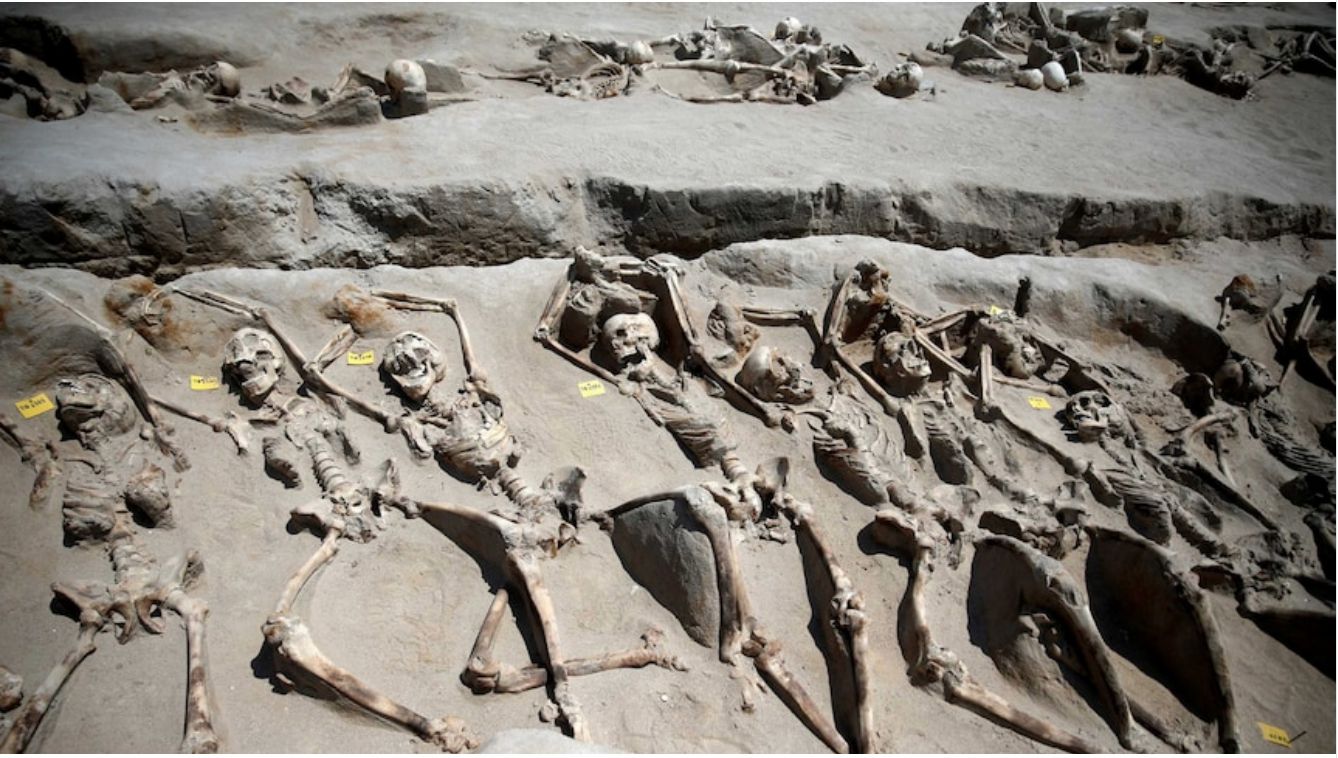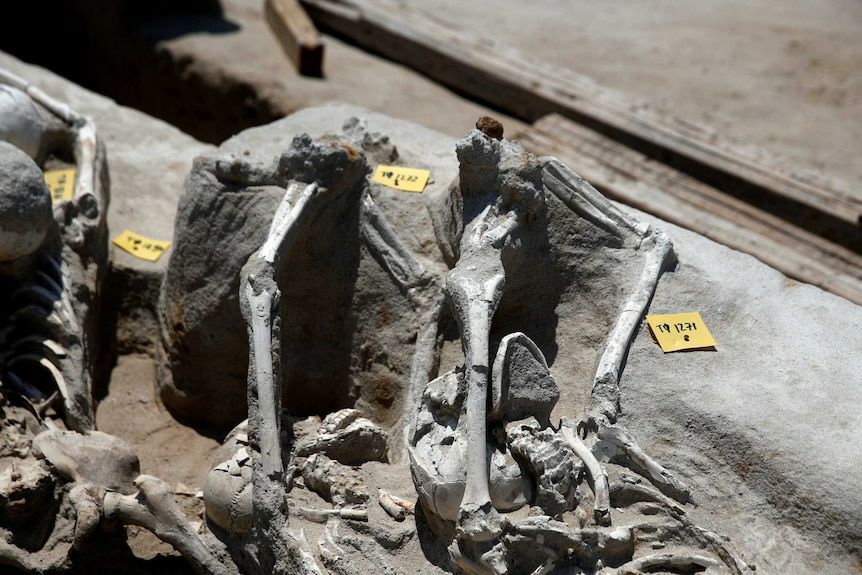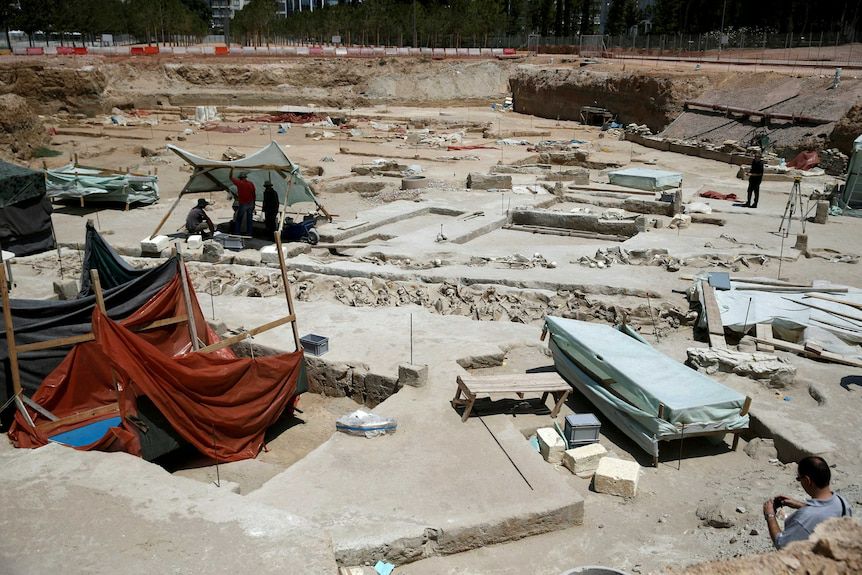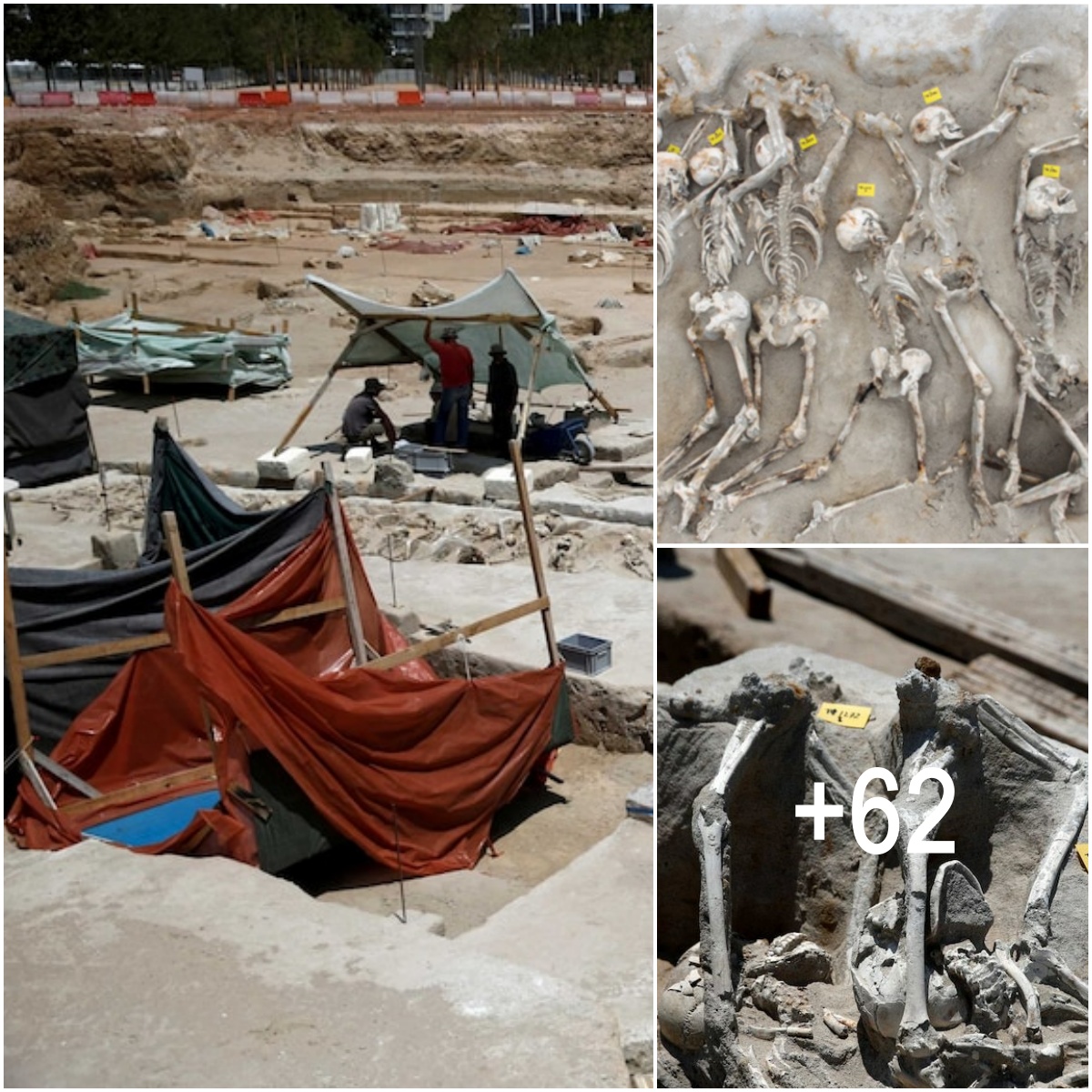Breaking News! Skeletons Shackled at The Wrists Found in Ancient Mass Grave in Athens
Archaeologists have offered a first look at the site where 80 skeletons with wrists clamped by iron shackles lie in a mass grave in an ancient Greek cemetery.
The team of archaeologists said the bodies — which could date back to 632BC — were the result of a mass execution.
But who they were, how they got there and why they appear to have been buried with a measure of respect remains a mystery.
They were found earlier this year in part of the Falyron Delta necropolis — a large ancient cemetery unearthed during the construction of a national opera house and library between downtown Athens and the port of Piraeus.
Key points:
Skeletons handcuffed with indications the victims were part of mass execution
Experts say people could have been killed after failed coup in 632 BC
DNA testing and research being used to uncover how the people died
While the bodies were handcuffed at the wrists, expert say the dead were buried with respect.(Reuters: Alkis Konstantinidis)
But on a rare tour of the site, archaeologists carefully showed journalists the skeletons, some lying in a long neat row in the dug-out sandy ground, others piled on top of each other, arms and legs twisted with their jaws hanging open.
“They have been executed, all in the same manner. But they have been buried with respect,” head of excavations Dr Stella Chryssoulaki said.
“They are all tied at the hands with handcuffs and most of them are very young and in a very good state of health when they were executed.”
The orderly way they have been buried suggest these were more than slaves or common criminals.
More than 1,500 bodies are buried in the ancient Falyron Delta cemetery in Athens.(Reuters: Alkis Konstantinidis)
Mass killings could span from coup attempt
The cemetery dates from between the 8th and 5th century BC.
“It is a period of great unrest for Athenian society, a period where aristocrats, nobles, are battling with each other for power,” Dr Chryssoulaki said.
One of the strongest theories is that they were supporters of Cylon, an Athenian noble and Olympic champion who staged an attempted coup in Athens in 632BC with the help of his father-in-law, the tyrant of Megara.
Experts say the people who were killed were supporting a failed ancient coup.(Reuters: Alkis Konstantinidis)
The coup failed and Cylon hid in a temple of the Acropolis. He managed to escape, but the people who backed him were killed.
“Perhaps with the DNA tests that we will do on these skeletons we may confirm or not this hypothesis that these deceased, these young people could be … part of a coup … an attempt by a noble to take power by force,” Dr Chryssoulaki said.
More than 1,500 bodies lie in the whole cemetery; some infants laid to rest in ceramic pots, other adults burned on funeral pyres or buried in stone coffins.
Unlike Athens’ renowned ancient Kerameikos cemetery, the last resting place of many prominent ancient Greeks, these appear to be the inhabitants of regular neighbourhoods.
Hits: 0







